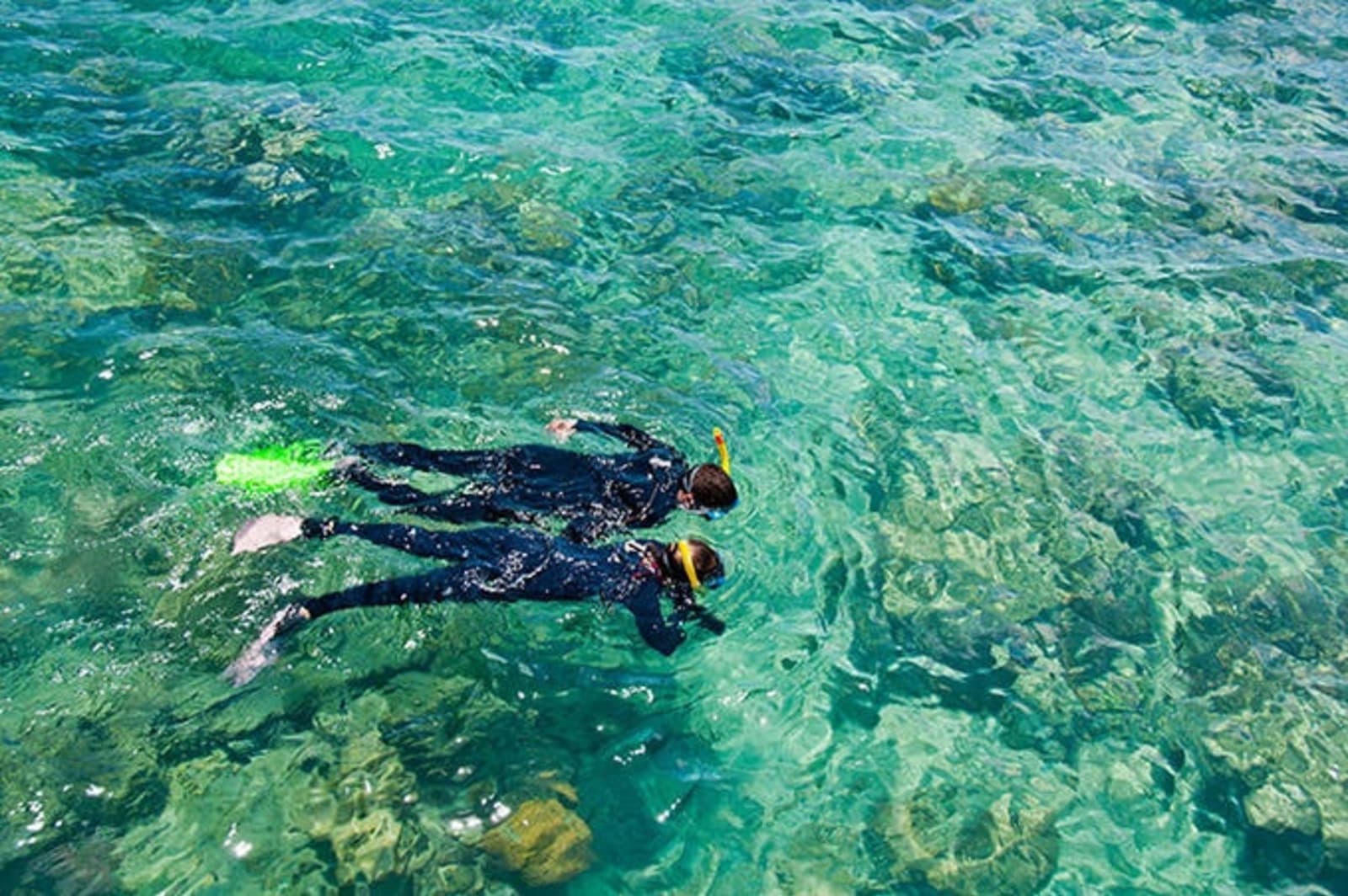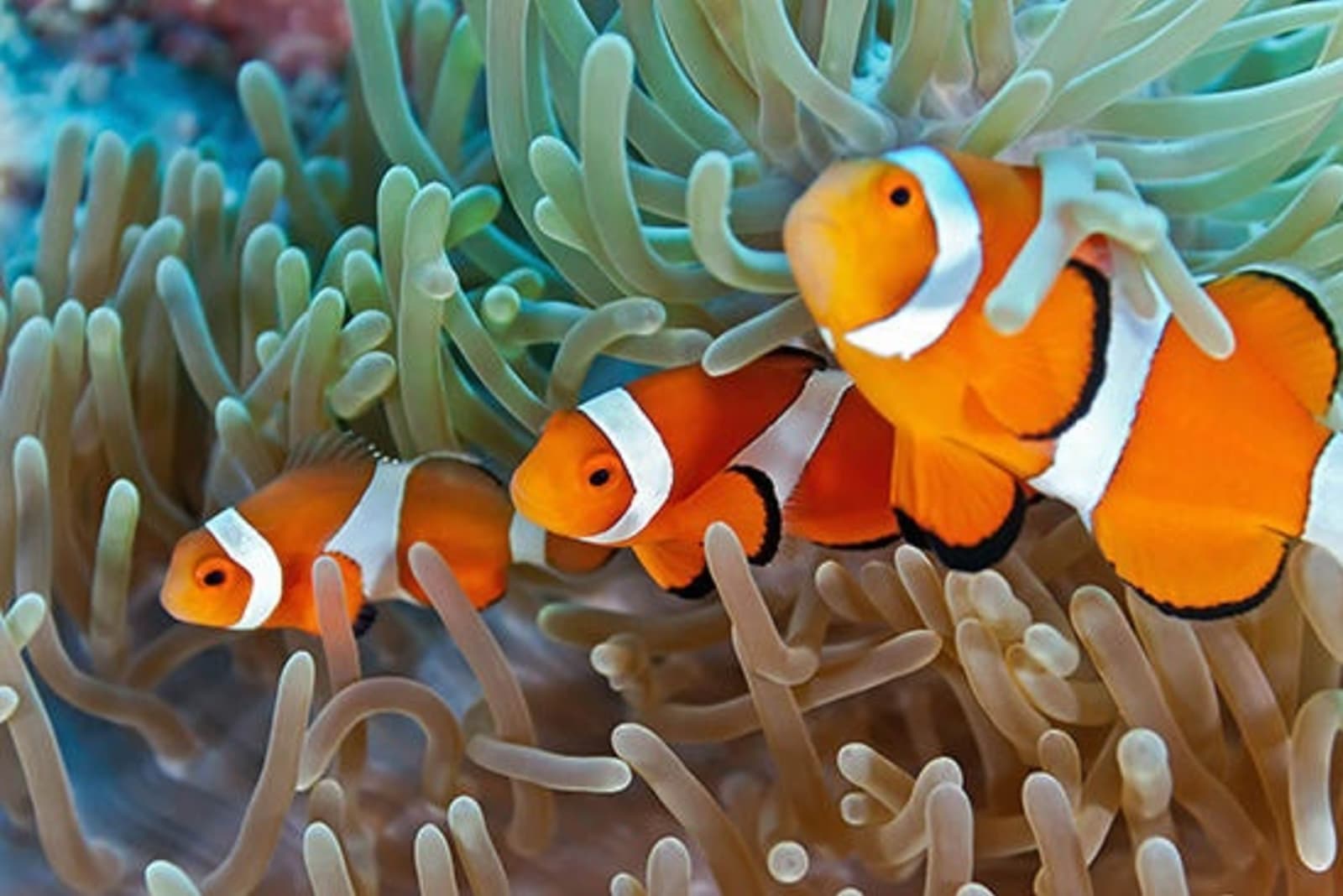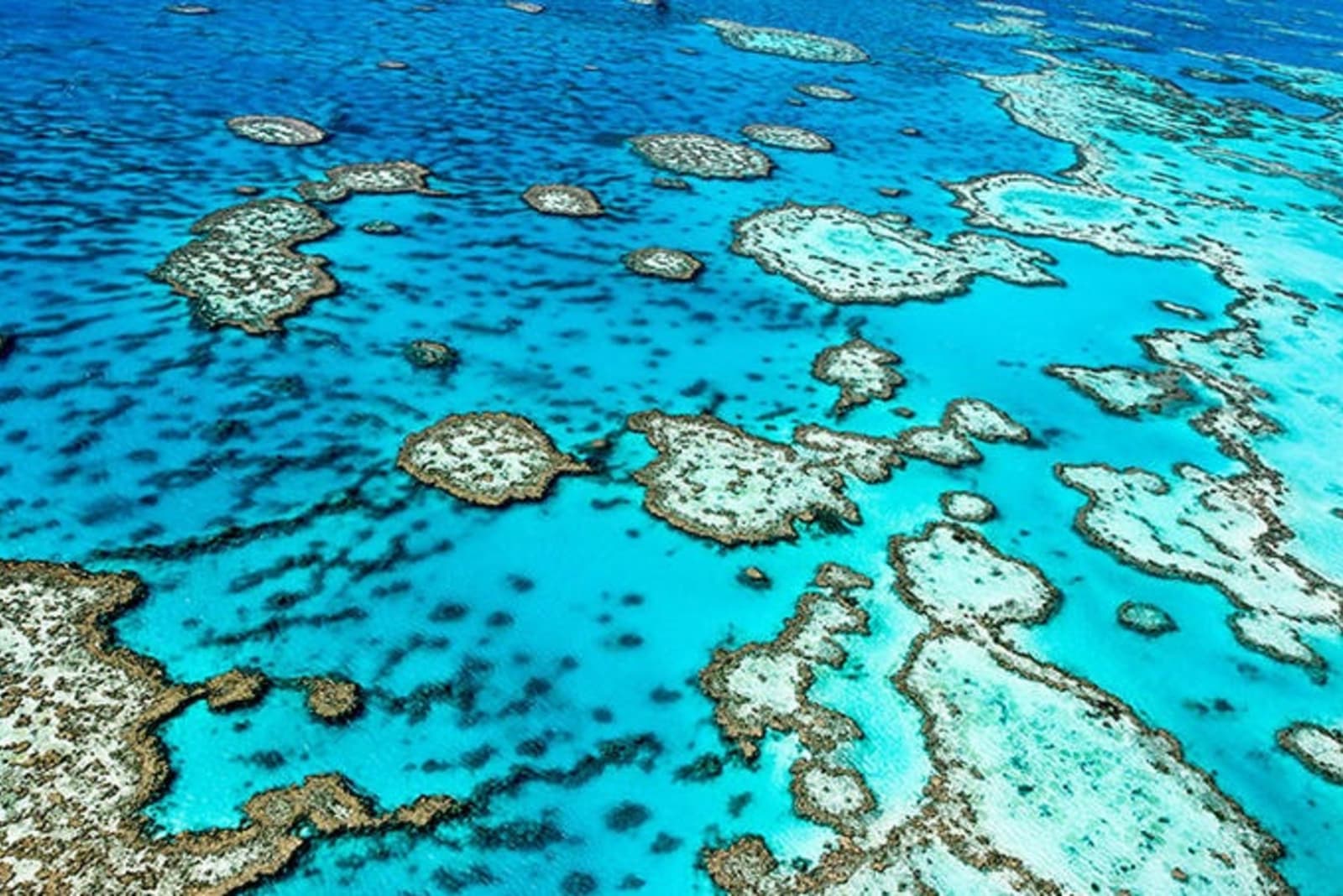The Great Barrier Reef is quite simply one of the most spectacular natural wonders of the world. But what’s the best way to see this incredible phenomenon – bird’s-eye view or beneath the waves? I decided to put both to the test when I visited earlier this year.



Snorkelling
Immersing myself in Australian waters had been the last thing on my mind. I’d had every intention of boarding the glass-bottomed boat, but by the time we’d finished the punishing two-hour catamaran crossing from Hamilton Island to Hardy Reef, the queues were already trailing round the pontoon.
This is probably a good time to confess that I can’t actually swim. But I wasn’t about to let that minor detail stop me from witnessing one of the most incredible spectacles on earth – and I certainly hadn’t travelled halfway across the world to stand in line all day. So I squeezed into a ‘stinger suit’, slipped on some flippers, tightened my snorkel mask, buckled my flotation vest and jumped right in.



Almost instantly, I felt claustrophobic – a sensation I’ve never experienced before. Turns out that being surrounded by an ocean-load of tropical fish – fantastic as that sounds and as beautiful as they were –was actually quite frightening for me (some of them are much bigger than you think).
Plus, on the boat ride over they’d made it very clear that there are sharks and jellyfish out here, which made me extremely nervous about what might be lurking in all those nooks and crannies. Nothing scary came to light – but I was constantly looking over my shoulder, and found it impossible to relax and just ‘enjoy’ the experience.



Another obstacle was the current – which really wasn’t working in my favour. The harder I kicked towards those bright, turquoise strips of promise in the distance (which staff had informed me is where all the cool, colourful stuff lives), the further away I became. I might as well have been swimming in reverse, tiring myself out to no avail.
Now all that aside, I did actually manage to see some cool stuff down there. I got a good look at some coral. I saw plenty of yellow-tailed fusiliers, plus some zebra-striped fish and rainbow-coloured ones (although sadly, I didn’t find Nemo). Best of all, a giant sea turtle swam right by me, which was an incredible sight to behold. However, overall, I came away feeling disappointed as I’d really hoped to see so much more.



Pros
- Being in the water gives you the best chance of getting up close and personal with the world beneath the waves.
- You can stay in the water for as long as you like – giving you the best chance of spotting one of the ‘Great Eight’ (whales, manta rays, clownfish, turtles, potato cod, giant clams, Maori wrasse and sharks).
- It’s far cheaper than scuba-diving or helicopter flights, and you really don’t have to venture very far to see some amazing sights.
Cons
- The area immediately around the pontoon became rather congested with other swimmers, which can get in the way of your viewing experience.
- Snorkelling is often touted as the ‘relaxing’ alternative to scuba-diving – but if you’re not a strong swimmer, it can still be a fairly taxing experience. I found it far more physically demanding than expected and I struggled with my breathing technique.
- The tide can really work against you in this scenario, pulling you away from all the action and causing exhaustion.



Helicopter
Undeterred by my disappointment, I decided to give things a go from the air. Now this is probably a good point at which to tell you that I’m terrified of helicopters and had sworn I’d never set foot in one. But I was determined to have one more crack at seeing the Great Barrier Reef – and I’m so glad I did.
The actual helicopter itself was very small and didn’t seem particularly robust – it looked more like a remote-controlled toy than a commercial aircraft! But I had faith in our pilot, Sascha, who immediately made us feel we were in safe hands. Take-off was tense (mainly due to my ‘heliphobia’ kicking in as soon as the rotor blades started whirring) – but once we were airborne, I had the time of my life.
The views of the reef from the air were simply spectacular – by far the most stunning sight I’ve ever seen, knocking the Northern Lights off my top spot for good (sorry, Aurora). You can only get a true sense of the sheer scale of this magnificent ecosystem from above – don’t forget, this Eighth Wonder of the World is visible from space and in the helicopter, you can see why.
The vibrant cyan hues of the water and the undulating coral formations were simply breathtaking – I even managed to spot a manta ray from all the way up there, which was amazing! And from the front passenger seat, the helicopter’s floor-to-ceiling windscreen enabled mind-blowing, uninterrupted views.



Pros
- The crystal clear, panoramic views of the Great Barrier Reef.
- You get to stay nice and dry and don’t run the risk of being bitten or stung by anything during the experience.
- There’s zero physical exertion or apparatus required.
- The 45-minute flight to Hamilton Island is a fantastic way to take in some extra sights, such as Whitehaven beach, whilst skipping the seasickness-inducing, two-hour catamaran trip back.
Cons
- You’ll only get to spot the real giants of the sea (if you’re lucky).
- It’s expensive (although I felt it was worth every penny)
- Both the 10- and 45-minute flight options are short, compared to unlimited snorkelling.
- It’s not for the fainthearted and if you run into stormy weather (as we did) it can be a pretty hair-raising ride.



Verdict…
It should really be a tie – both options have their advantages and disadvantages, and I’m sure my snorkelling experience would have been far more favourable on a calmer day. For me personally, the helicopter ride delivered the real ‘wow’ factor I’d been hoping for. But ultimately, seeing it from above and below the waves is the only way to fully appreciate the breadth, depth and beauty of the Great Barrier Reef.
Chat to one of our Travel Experts about adding a Great Barrier Reef helicopter or snorkelling tour to your tailor-made Queensland holiday.


